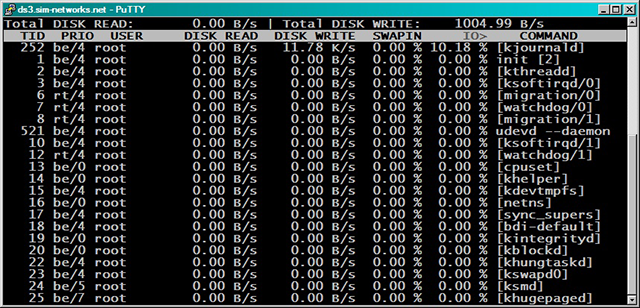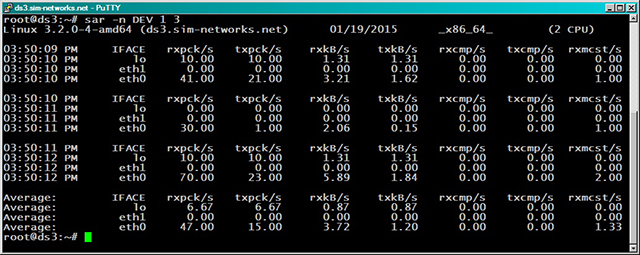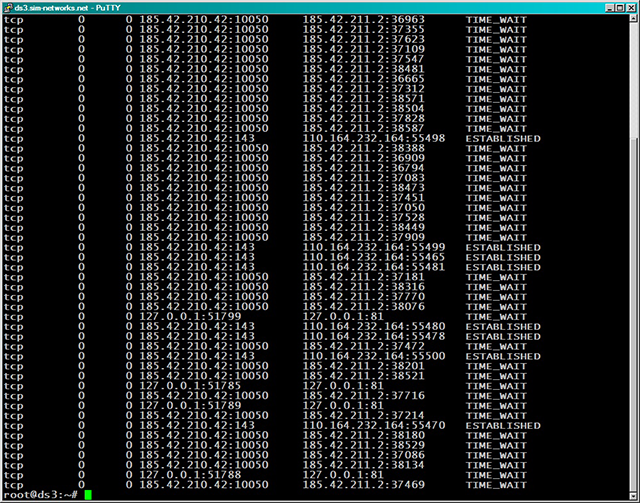First of all, you should examine the output of the top command:

The analysis is carried out line by line from top to bottom. The load average parameter displays the total system load. Its value of fewer than 1 means that there is no serious load. A value greater than 1 may portend performance problems. Next, move on to the %Cpu(s) line. All values in it, except the id field, should not take on large values for a long time. Below, in the process output window, you can specify which of them consumes the most CPU time.
The KiB Mem and KiB Swap lines display statistics on the consumption of RAM and the swap partition/file. Here you need to monitor the reserve of free RAM. You can find out which processes consume it the most by changing the sorting using the

To find out which of the processes loads the disk subsystem the most, you should use the iotop command:

If there are no problems with the disk subsystem, you need to study the statistics of traffic passing through network interfaces using the sar -n DEV 1 3 command:

It is also recommended to check the number of network connections with the netstat –ip -t -an command:

You can simply count them using netstat –ip -t -an | wc-l:
